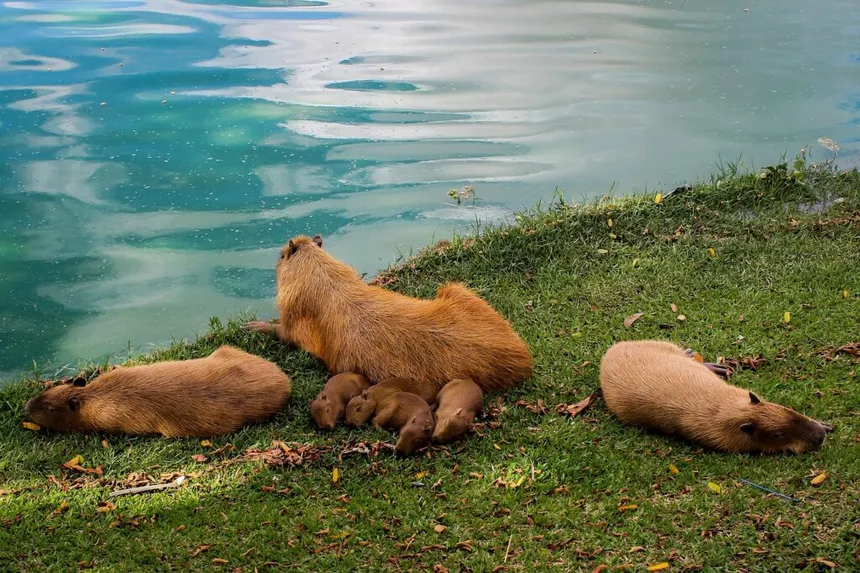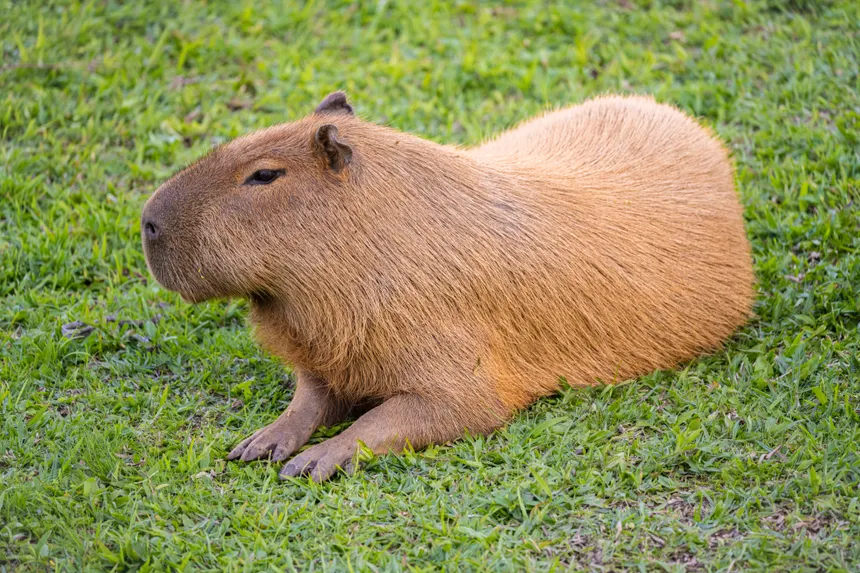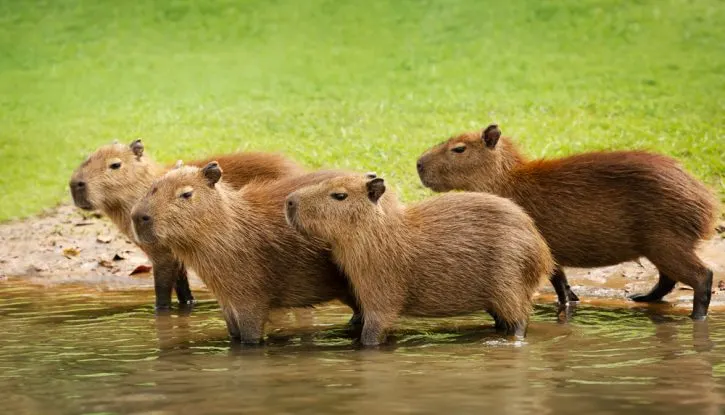“Capybara Chronicles: Fascinating Facts About the World’s Largest Rodent”

Capybaras are the largest rodents on Earth, and they’ve become internet sensations thanks to their laid-back personalities, sociable nature, and adorable expressions. Native to South America, these semi-aquatic mammals are far more complex and fascinating than their chill attitude suggests. From unusual friendships with other animals to surprising survival skills, here’s a comprehensive look at everything that makes capybaras so interesting—and unexpected.
1. The World’s Largest Rodent
Capybaras (Hydrochoerus hydrochaeris) can weigh between 35 to 70 kilograms (77–154 pounds) and grow up to 4.4 feet long. Despite their massive size, they’re closely related to guinea pigs and rock cavies.
2. Semi-Aquatic Lifestyle
Capybaras are highly adapted to life in water:
- They have webbed feet for swimming.
- Their eyes, ears, and nostrils are positioned on top of their heads, like hippos, allowing them to stay mostly submerged.
- They can hold their breath underwater for up to five minutes to avoid predators.
Water plays a vital role in their lives for thermoregulation, escape, and socializing.
3. Social Butterflies of the Animal Kingdom
Capybaras are extremely social animals. They live in large groups—sometimes over 20 individuals—and form close-knit bonds. These groups have dominance hierarchies, with a single dominant male leading and mating with multiple females.

4. Surprisingly Friendly—Even With Other Species
One of the most surprising facts about capybaras is their tendency to befriend other animals. Birds, monkeys, cats, even crocodiles have been photographed comfortably sitting on or around capybaras. Their calm and non-aggressive temperament allows them to coexist peacefully with a wide range of species.
5. Communication Through Whistles and Purrs
Capybaras may look quiet, but they are very vocal. They communicate using:
- Barks to alert the group of danger
- Purrs and whistles for social bonding
- Clicks and squeals during play or grooming
Each sound plays a specific role in maintaining group cohesion.
6. Constant Chewers with Ever-Growing Teeth
Like all rodents, capybaras have continuously growing teeth. To prevent overgrowth, they chew constantly—on grasses, aquatic plants, bark, and hay. This helps keep their teeth in check and supports digestion.
7. Capybaras Practice Coprophagy
It may sound unpleasant, but capybaras eat their own feces (a behavior called coprophagy) to better absorb nutrients. Their first digestion doesn’t fully break down plant fibers, so they consume soft feces to extract more vitamins and minerals.
8. Capybaras Can Be Domesticated—But It’s Complicated
Some people keep capybaras as exotic pets due to their docile nature. However, they:
- Need ample space and water access
- Thrive in pairs or groups
- Require a specialized diet
- Are illegal to own in many places without a permit
They are not recommended for casual pet owners.
9. Lifespan and Reproduction
Capybaras live about 8–10 years in the wild, and up to 12 years in captivity. They give birth to 2–8 pups per litter, and babies can walk and swim almost immediately after birth.
10. Cultural Importance in South America
In countries like Venezuela and Brazil, capybaras are sometimes farmed for meat, leather, and oil. Despite this, many people also see them as symbols of peace and tranquility, especially in urban parks and wildlife reserves.
11. Natural Predators and Defense
Though they look defenseless, capybaras rely on:
- Alert group behavior
- Fast swimming
- Submerging underwater
- Sharp teeth for last-resort defense
Predators include jaguars, caimans, anacondas, and humans.
12. Capybaras and Hot Springs: A Japanese Phenomenon
In Japan, capybaras in zoos have become celebrities for their habit of soaking in onsen (hot springs) during winter. It’s become a yearly tradition, attracting thousands of visitors.

Conclusion: More Than Just a Meme
Capybaras have earned their online fame for good reason. Their calm demeanor, complex social lives, unique adaptations, and surprising interactions with other animals make them one of the most fascinating creatures on the planet. Whether observed in the wild or admired in a sanctuary, capybaras continue to captivate animal lovers with their unexpected charm and peaceful way of life.



